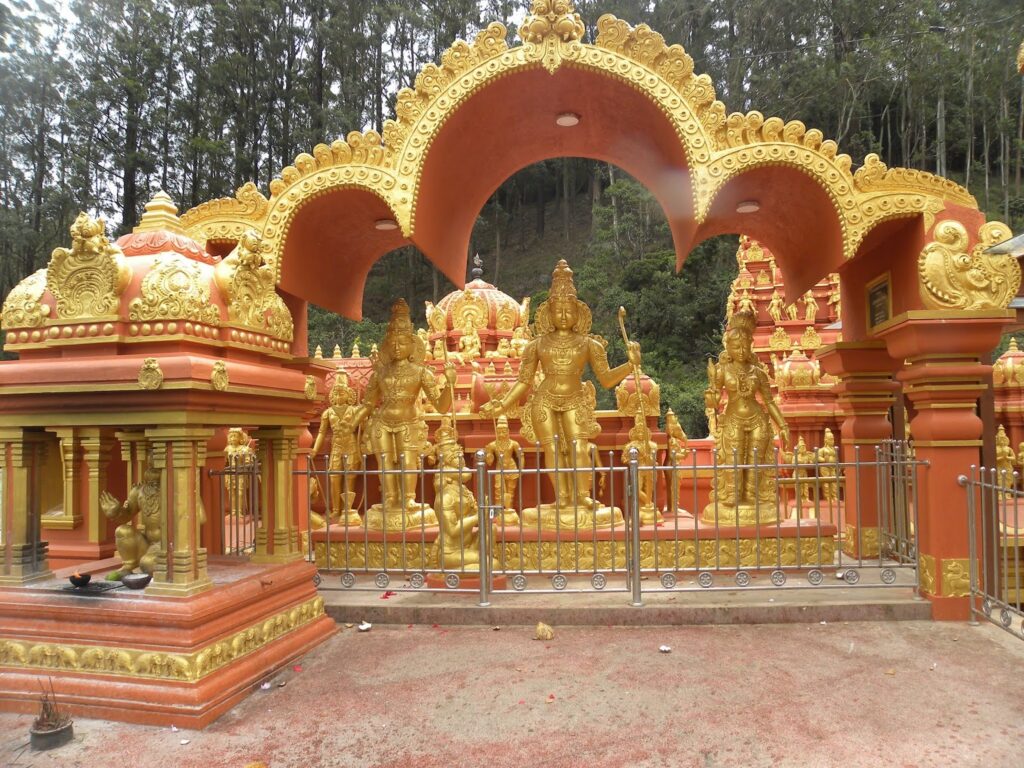After visiting the Mata Sita Temple in Sri Lanka, one can say Ramayana is written basing upon real story by Balmiki:
————————————————-
(by Lokanath Mishra)
———————————————-
I visited Sita mata temple on 21.12.2024. Tucked away in the picturesque town of Nuwara Eliya, Sri Lanka, lies the revered Mata Sita Temple, a sacred site for devotees of Lord Rama and Sita. This temple, also known as the Seetha Amman Kovil, is a testament to the enduring legacy of the Ramayana and its significance in Sri Lankan culture.
The Mata Sita Temple was built by the local Tamil community, with the support of the Sri Lankan government, in the 18th century. The temple’s architecture is a blend of traditional Sri Lankan and South Indian styles, reflecting the cultural exchange between the two regions.
One of the temple’s most striking features is the Ashoka Batika, a sacred spot where Sita is believed to have been held captive by Ravana. According to legend, Hanuman, Lord Rama’s loyal devotee, visited Sita at this site, leaving behind his footprints as a symbol of his devotion.
The Ashoka Batika features a series of five footprints, said to belong to Hanuman. These footprints are revered by devotees, who believe that they possess spiritual significance and healing properties.
Within the temple complex, devotees can visit the sites where Sita is believed to have bathed and taken food during her captivity. The bathing area, known as the “Sita’s Bath,” is a serene spot surrounded by lush greenery, where devotees offer prayers and worship.
The dining area, known as the “Sita’s Kitchen,” features a sacred fire pit where Sita is believed to have cooked her meals. Devotees offer food and prayers at this site, seeking blessings and spiritual nourishment.
The Mata Sita Temple plays a crucial role in establishing the Ramayana’s historical significance. The temple’s existence, along with other Ramayana-related sites in Sri Lanka, provides tangible evidence of the epic’s roots in ancient Indian and Sri Lankan cultures.
By visiting these sites, devotees and scholars can gain a deeper understanding of the Ramayana’s historical context and its enduring impact on South Asian cultures.
The Mata Sita Temple in Sri Lanka is a sacred site that embodies the spirit of devotion, faith, and cultural heritage. As a testament to the Ramayana’s historical significance, this temple serves as a beacon of inspiration for devotees and scholars alike. By exploring this temple and its surroundings, one can gain a deeper appreciation for the enduring legacy of the Ramayana and its profound impact on South Asian cultures . This is the only temple that is dedicated to Sita Mata exclusively in her own name in the world. This place is also one of the most important Ramayana-related places in Sri Lanka. It is said that Sita Mata spent her days in this place after being abducted by the evil king Ravana of Sri Lanka approximately 7,500 years ago. There are few signs that the Prabhu Hanuman’s feet near the temple. The temple is located amidst a lush botanical garden on the slopes of Nuwara Eliya.
This temple is one of the most important Ramayana-related places in Sri Lanka. The soil around the temple is black in color. This corresponds to the belief that Lord Hanuman burnt down the area before he left Sri Lanka. There is a stream that flows by the side of the temple which runs down from the hill. This stream is believed to have catered to the needs of Sita Mata during her stay here.
Footprints of varying sizes are found in the rocks nearby the stream. This relates to the legend that Lord Hanuman rested on these rocks while trying to rescue Sita Mata. The varying size of footprints corresponds to Lord Hanuman’s ability to change sizes as mentioned in Ramayana. And, about a century ago, three idols were discovered in this stream which led people to further believe that their ancestors used to worship them. Devotees throng to this place where Sita Mata had supposedly spent time and they are convinced that this part of the epic Ramayana has taken place here. Considering all the above points one can say Ramayana was written by Balmiki basing on facts.

